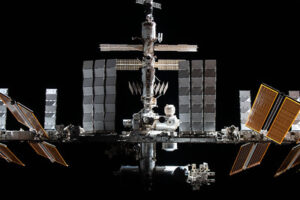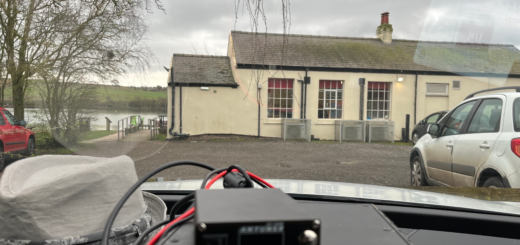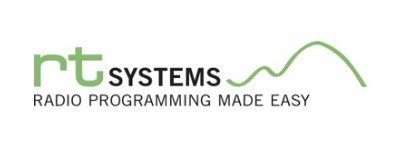Girlguiding members in live ISS contact
Girlguiding members in live ISS contact.
On the 3rd of October 2024 a contact between Members of Girlguiding UK and the astronaut Sunita Williams took place at the British historic site at Brooklands.

The Contact was made possible by a lot of hard work by the Radio Society of Great Britain (RSGB) and ARISS, in conjunction with Girlguiding Surrey West and Brooklands Museum including the Innovation Academy.
Girlguiding Patron, HRH The Duchess of Edinburgh was also able to attend the contact as part of a visit. Which was to promote the engagement and involvement of girls and young women in science, technology, engineering and maths (STEM).
A large number of Radio Amateurs were able to Listen on 145.800 MHz and or watch the livestream at live.ariss.org. If you missed it or would like to watch again please visit ARISS YouTube.
Sunita Lyn “Suni” Williams is an American astronaut, retired U.S. Navy officer, and former record holder for most spacewalks by a woman and most spacewalk time for a woman. She was assigned to the International Space Station as a member of Expedition 14 and Expedition 15, and was amazing with the Young People during the contact.
RSGB President John McCullagh MBE, GI4BWM says:
“The RSGB has always supported ARISS in its exciting mission to link young people with astronauts on the International Space Station (ISS) via amateur radio, and we understand the lasting impact this can have on everyone at each contact.
I am delighted that the Society has been able to work with ARISS to put this special event in place allowing Brownies and Guides to make contact with the ISS in the presence of their Patron, HRH The Duchess of Edinburgh.”
More About the ISS
The International Space Station (ISS) is a remarkable testament to human ingenuity and international collaboration. Launched in 1998, the ISS serves as a microgravity laboratory, orbiting Earth approximately every 90 minutes at an altitude of around 400 kilometers (about 248 miles). It has become a hub for scientific research, facilitating experiments across various fields, including biology, physics, and astronomy, contributing to our understanding of life in space and the effects of microgravity on different systems.
One fascinating aspect of the ISS is its use of amateur radio, known as ham radio, which fosters communication between astronauts and people on Earth. The ISS is equipped with an amateur radio station operated under the call sign NA1SS. This initiative not only serves as a platform for educational outreach but also enhances the global amateur radio community’s engagement with space exploration.
Amateur radio allows astronauts to communicate with schools and clubs around the world, sharing their experiences and inspiring future generations. Through scheduled contacts, students can ask questions and interact directly with astronauts, creating a unique educational opportunity. This program, known as ARISS (Amateur Radio on the International Space Station), has been instrumental in promoting STEM (science, technology, engineering, and mathematics) education.
Moreover, amateur radio on the ISS provides astronauts with a means of personal communication, allowing them to connect with family and friends during their missions. This connection can significantly help with the psychological well-being of crew members, offering a sense of normalcy amid the extraordinary environment of space.
In summary, the ISS not only serves as a beacon of scientific research but also leverages amateur radio to foster communication and education, bridging the gap between space and Earth.



